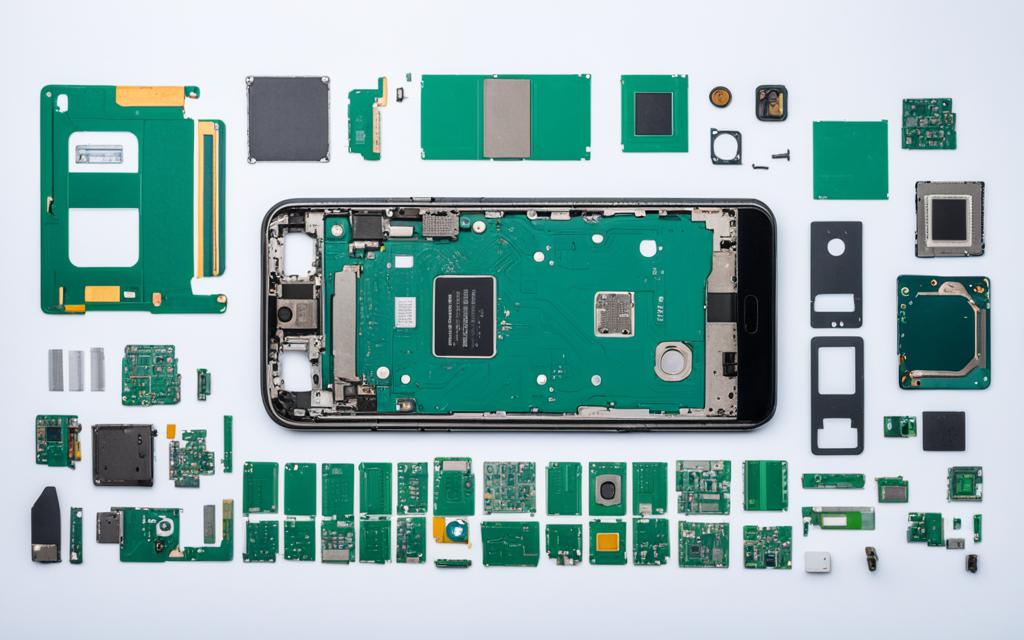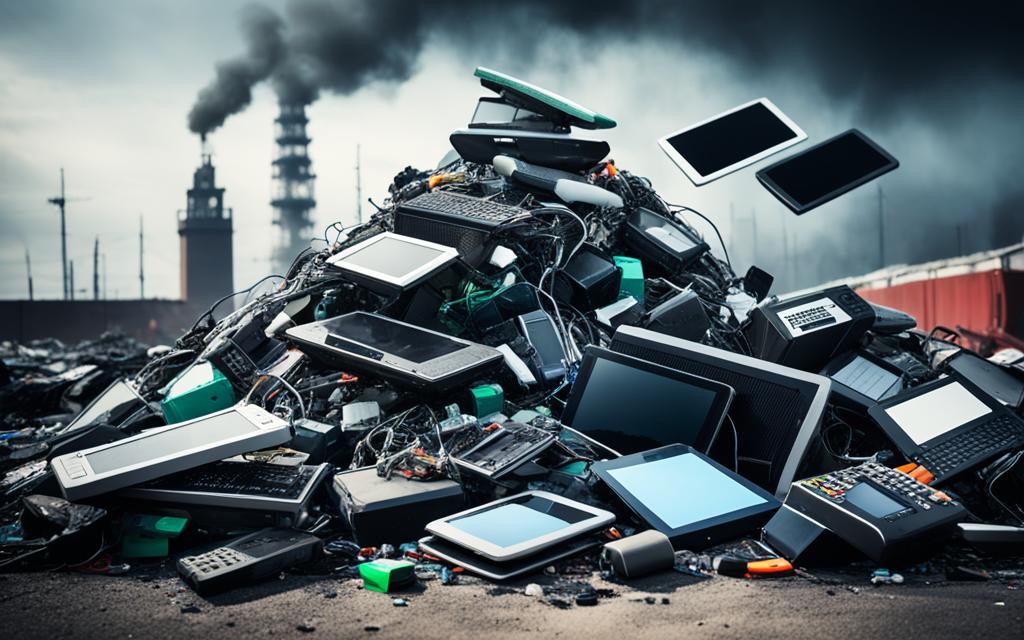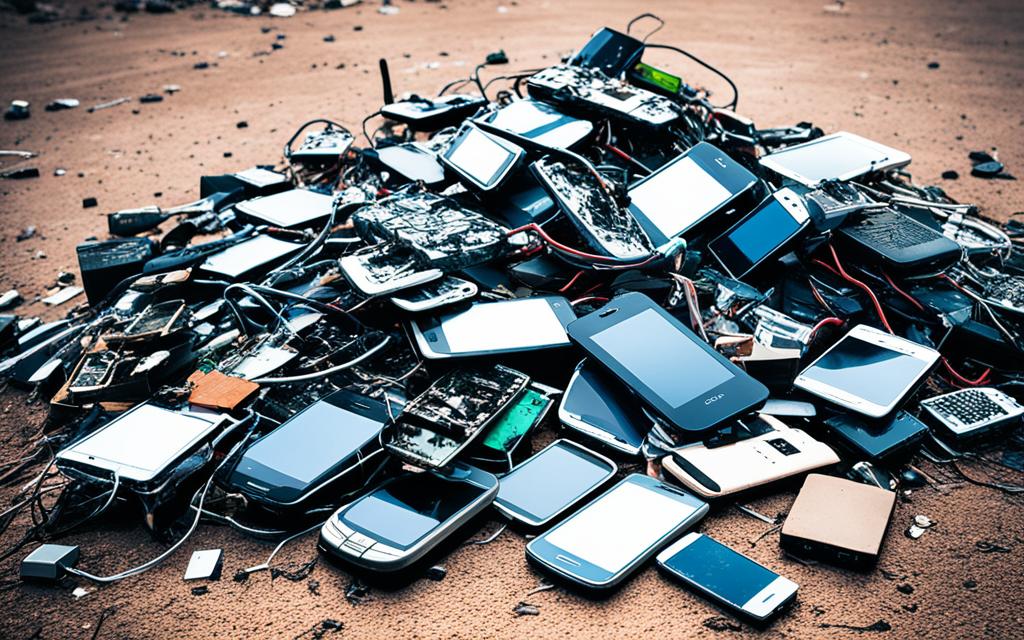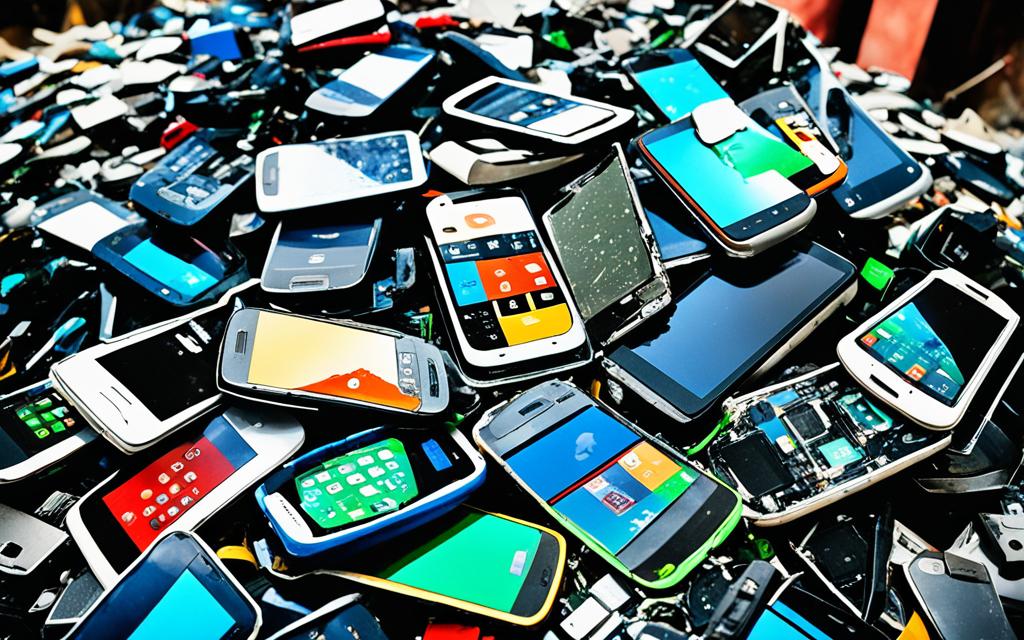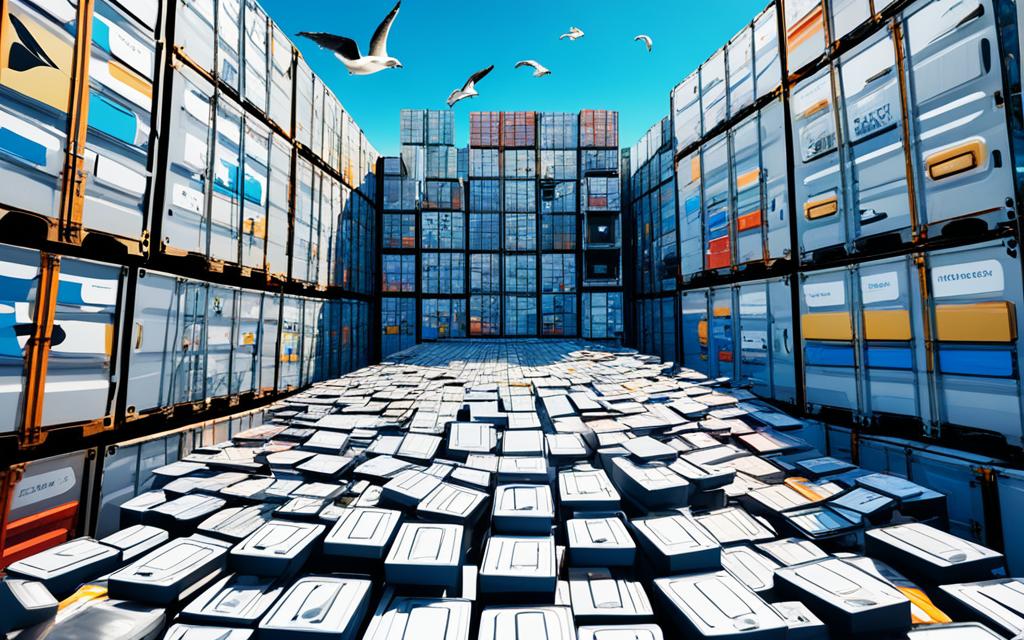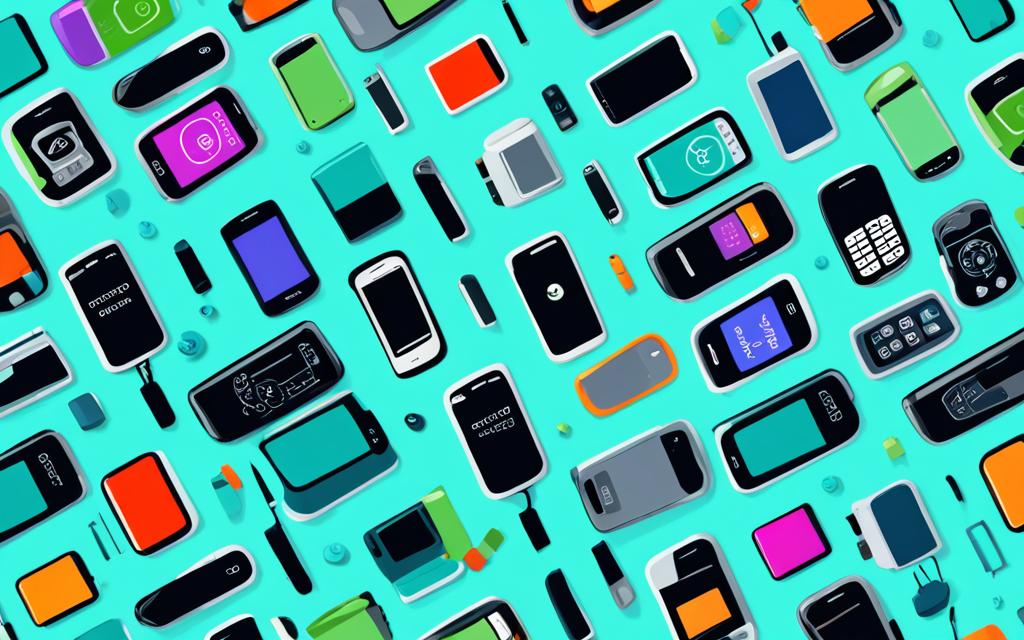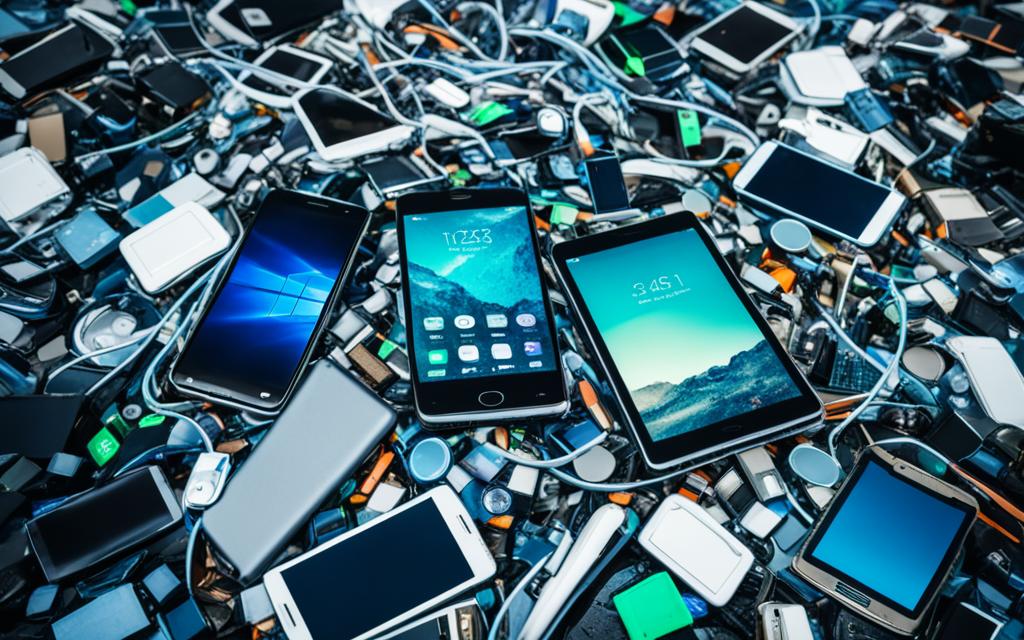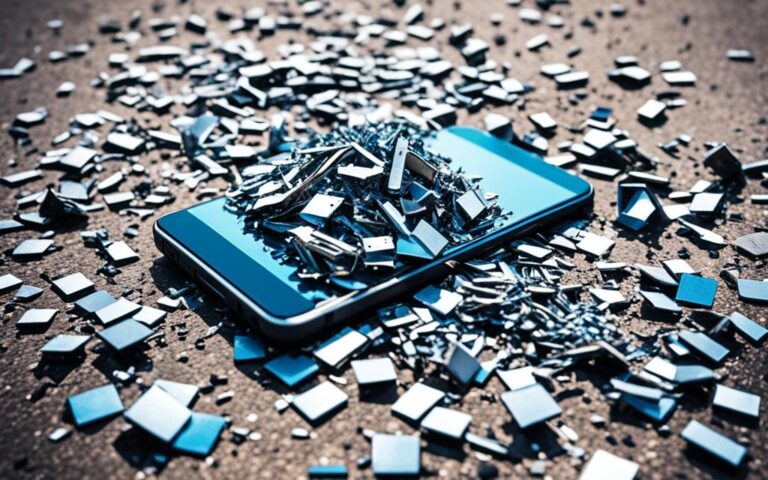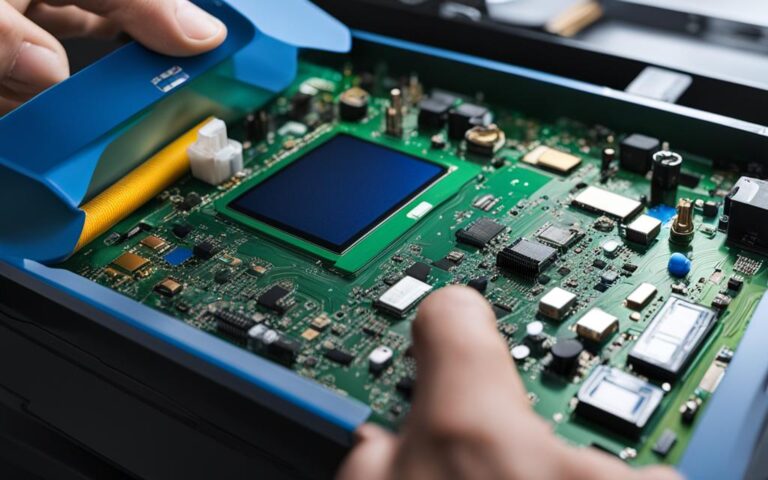The Journey of a Recycled Phone: From Waste to Resource
Globally, more than 5 billion people own cellphones, and many constantly upgrade to new models. However, this leads to a significant amount of electronic waste, with approximately 416,000 cellphones entering landfills or incinerators in the US every day. E-waste, including cellphones, is the fastest growing and most problematic waste stream in the world. Only around 15% to 20% of e-waste is recycled globally, resulting in squandered resources and environmental damage. The journey of a recycled phone involves addressing this issue and transforming it from waste into a valuable resource.
Recycling cellphones plays a vital role in creating a more sustainable future. By recycling our old phones, we can turn a seemingly useless piece of electronic waste into something valuable and beneficial. The journey of a recycled phone begins with our commitment to making responsible choices and taking action to protect our planet.
The Environmental Impact of Electronic Waste
E-waste, which encompasses various electronic devices, including cellphones, poses significant environmental challenges. In 2014, over 16 billion pounds of electronic waste were discarded in the US, with the amount expected to reach 50 million tons annually by the end of 2018. This staggering volume of waste has far-reaching consequences for the environment and human health.
The improper disposal of electronic waste has detrimental effects on ecosystems and communities. Many countries, in an attempt to offload their e-waste, ship it to developing nations where it is often dumped or incinerated, leading to severe environmental pollution and health hazards. The toxic materials found in electronic devices, such as lead, mercury, cadmium, and brominated flame retardants, can contaminate soil, air, and water, and pose a serious risk to both human and animal life.
Addressing the environmental impact of electronic waste requires waste minimization and the adoption of proper recycling methods. Governments and organizations worldwide are recognizing the urgency of this issue and implementing new laws and regulations to ensure responsible e-waste management. By promoting sustainable practices, we can mitigate the damage caused by e-waste and protect our planet for future generations.
The Importance of Recycling Methods
To effectively combat the environmental impact of electronic waste, it is crucial to prioritize proper recycling methods. Recycling allows for the recovery of valuable materials from discarded devices, reducing the need for raw resource extraction and minimizing energy consumption. By recycling electronic waste, we can conserve natural resources and reduce pollution associated with mining and manufacturing processes.
“Recycling electronic waste not only helps protect the environment but also contributes to the creation of a circular economy, where materials are reused, repurposed, and recycled, leading to a more sustainable future.”
Electronics can contain a range of valuable materials, including precious metals like gold, silver, and copper. Recycling processes can extract these metals from circuit boards and other components, ensuring their reuse in various industries. Additionally, proper recycling methods can safely handle hazardous materials, preventing them from harming the environment and endangering human health.
Charting the Environmental Impact
| Environmental Impact of Electronic Waste | |
|---|---|
| Landfill Waste | Leads to soil and water contamination |
| Incineration | Releases toxic substances into the atmosphere |
| Ecosystem Disruption | Threatens biodiversity and ecological balance |
| Resource Depletion | Higher demand for raw materials |
| Pollution | Contamination of air, water, and soil |
Understanding the impact of electronic waste is essential for raising awareness and driving change. From the harmful effects of improper disposal to the depletion of valuable resources, the environmental consequences are far-reaching. Adopting sustainable practices, such as recycling and responsible e-waste management, is key to mitigating these impacts and forging a more environmentally conscious future.
The Recycling Process of Cellphones
The journey of a recycled phone continues with the intricate and well-established cellphone recycling process. This process involves several crucial steps, starting from the collection of old cellphones at recycling facilities. Once collected, the phones are assessed to determine whether they are suitable for refurbishment or material recovery based on their condition and age.
Functional cellphones that can still be used are sent for refurbishment. This includes repairs, software updates, and component replacements to ensure the phone is in optimal working condition. The goal of refurbishment is to extend the lifespan of the phone and give it a second chance at being used. Refurbished phones can be sold or donated, reducing the demand for new devices and contributing to a more sustainable future.
Non-functional cellphones undergo the process of material recovery. During this stage, valuable materials such as metals, plastics, and glass are carefully separated from the phone for further processing. The goal is to recover and recycle as many materials as possible to prevent them from ending up in landfills. Valuable metals like gold, silver, and copper can be extracted from the circuit boards through specialized techniques.
Lithium batteries, which are commonly found in cellphones, are also processed for valuable materials like steel. These materials can be used in various manufacturing processes, reducing the need for new resource extraction. Plastics and paper from the cellphones are recycled into new products, further minimizing waste and promoting a circular economy.
It’s worth noting that not all components of cellphones can be recycled. Proper disposal methods are employed for components that cannot be recycled, ensuring their safe and environmentally-responsible management.
To visualize the recycling process of cellphones, refer to the table below:
| Recycling Steps | Description |
|---|---|
| Collection | Cellphones are collected at recycling facilities |
| Assessment | Phones are assessed for refurbishment or material recovery |
| Refurbishment | Functional phones undergo repairs, software updates, and component replacements |
| Material Recovery | Non-functional phones are separated into valuable materials like metals, plastics, and glass |
| Precious Metal Extraction | Precious metals like gold, silver, and copper are extracted from circuit boards |
| Lithium Battery Processing | Valuable materials such as steel are recovered from lithium batteries |
| Plastics and Paper Recycling | Plastics and paper from cellphones are recycled into new products |
| Proper Disposal | Components that cannot be recycled are disposed of using appropriate methods |
The recycling process of cellphones demonstrates the commitment towards sustainable practices and responsible management of electronic waste. By participating in cellphone recycling, individuals contribute to the conservation of resources, reduction of waste, and the preservation of our environment.
The Environmental Benefits of Cellphone Recycling
Cellphone recycling offers significant environmental benefits. By recycling cellphones, future greenhouse gas emissions can be avoided, energy is saved, natural resources are conserved, and pollution is reduced. The recycling process reduces the need for new raw materials, saving energy used in their extraction and processing. Valuable materials extracted from cellphones can be reused in the production of new products, showcasing the versatility of recycled materials. Recycling also prevents potentially hazardous materials from entering the environment. Embracing a circular economy, which supports product repair, reuse, and recycling, is essential in extending the lifespan of cellphones and reducing electronic waste.
Environmental Benefits of Cellphone Recycling:
- Reduces greenhouse gas emissions: By recycling cellphones, the extraction and production of raw materials are minimized, leading to a significant reduction in carbon emissions. This helps combat climate change and promotes a cleaner, greener future.
- Conserves natural resources: Recycling valuable materials from cellphones, such as metals and plastics, reduces the need for virgin resources. This conserves natural resources like ores and fossil fuels, preserving them for future generations.
- Saves energy: The recycling process consumes less energy compared to the extraction and processing of new raw materials. By recycling cellphones, energy is saved and environmental impact is reduced.
- Prevents pollution: Improper disposal of cellphones can lead to the release of hazardous substances into the environment, contaminating soil and water sources. Recycling cellphones ensures that these potentially harmful materials are properly handled and disposed of, preventing pollution and protecting ecosystems.
- Promotes a circular economy: Cellphone recycling is a key component of the circular economy. Instead of the linear model of consume and dispose, a circular economy focuses on reducing waste, reusing resources, and recycling materials. By embracing a circular economy, we can extend the lifespan of cellphones and create a sustainable future.
By recognizing the environmental benefits of cellphone recycling and actively participating in recycling initiatives, we can contribute to a healthier planet and a more sustainable future.
| Environmental Benefits of Cellphone Recycling | Impact |
|---|---|
| Reduces greenhouse gas emissions | Avoided carbon emissions from raw material extraction and manufacturing processes |
| Conserves natural resources | Reduces the need for virgin resources like ores and fossil fuels |
| Saves energy | Reduces energy consumption compared to the production of new materials |
| Prevents pollution | Ensures proper handling and disposal of potentially hazardous materials |
| Promotes a circular economy | Embracing a sustainable model of reduce, reuse, and recycle |
Choosing to recycle your old cellphones is not just about getting rid of electronic waste. It’s about making a positive impact on the environment and contributing to the transition towards a circular economy. Together, we can create a greener, cleaner world for future generations.
Conclusion
Cellphone recycling is a vital step towards building a sustainable future and reducing electronic waste. By responsibly recycling your old cellphones, you contribute to transforming them from waste into valuable resources. Each stage of the recycling process – from collection to refurbishment and material recovery – plays a crucial role in conserving natural resources, minimizing environmental impact, and safeguarding human health.
By choosing to recycle, you actively participate in the circular economy, paving the way for a greener and more sustainable world for generations to come. Every cellphone recycled brings us one step closer to a healthier planet. Together, we can make a significant impact in reducing electronic waste and creating a better future for all.
Take action today and join the journey of recycled phones. By doing so, you help build a more sustainable world, where valuable resources are preserved, energy is saved, and pollution is reduced. Let’s embrace the opportunity to make a difference and shape a future that is not only environmentally conscious but also economically and socially sustainable. Together, we can create a world where the lifecycle of cellphones is extended, and electronic waste is reduced to a minimum. Start your journey towards a more sustainable future by recycling your old cellphones today.
FAQ
What is electronic waste?
Electronic waste, or e-waste, refers to discarded electronic devices such as cellphones, computers, and televisions. These devices contain valuable materials but also pose environmental challenges when not properly disposed of or recycled.
Why is electronic waste a problem?
Electronic waste is a problem because it is the fastest growing and most problematic waste stream globally. Only a small percentage of e-waste is recycled, leading to squandered resources and environmental damage. Improper disposal of e-waste can also pose health risks due to the presence of hazardous materials.
How can cellphone recycling help the environment?
Cellphone recycling offers significant environmental benefits. By recycling cellphones, we can avoid future greenhouse gas emissions, save energy, conserve natural resources, and reduce pollution. The recycling process also prevents potentially hazardous materials from entering the environment.
What happens during the cellphone recycling process?
The cellphone recycling process involves several steps. Upon collection at recycling facilities, phones are assessed for potential refurbishment or material recovery based on their condition and age. Functional phones are refurbished, while non-functional phones undergo material recovery where valuable materials like metals, plastics, and glass are carefully separated for further processing. Proper disposal methods are used for components that cannot be recycled.
How can I contribute to cellphone recycling?
You can contribute to cellphone recycling by responsibly disposing of your old cellphones. Many recycling facilities and manufacturers offer recycling programs where you can drop off your old cellphones for proper recycling. By participating in these programs, you are actively contributing to the circular economy and helping to reduce electronic waste.

